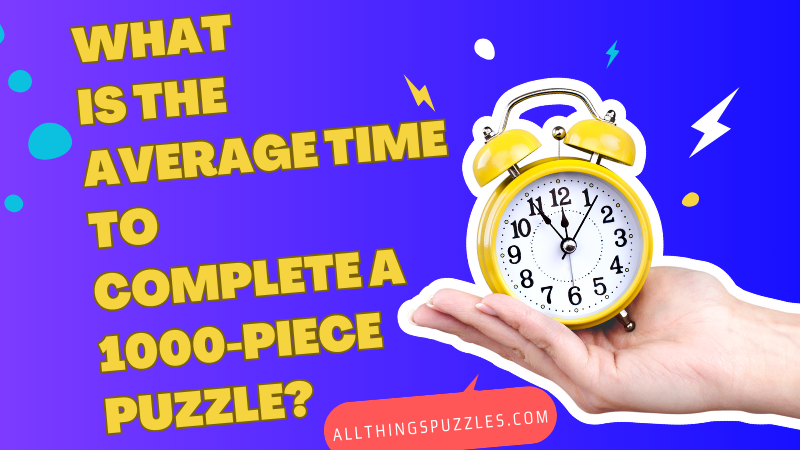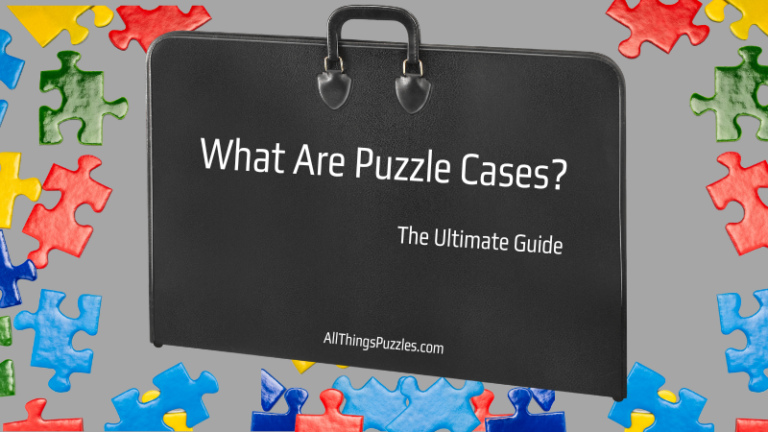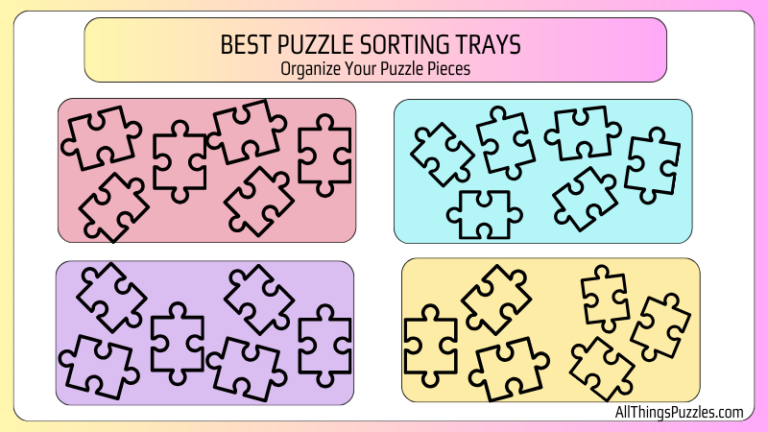Embarking on a 1000-piece puzzle is not merely a pastime; it’s a journey that tests patience, focus, and perseverance. Whether you’re an avid puzzler or a newcomer to the world of jigsaws, one question often lingers: What is the average time to complete a 1000-piece puzzle? While the answer may vary depending on numerous factors, from individual experience to the complexity of the puzzle itself, exploring this question unveils insights into the diverse approaches and strategies puzzle enthusiasts employ. Join us as we delve into the intricacies of puzzling and attempt to uncover an answer to this intriguing query.
Quick Answer: For an average adult, the completion time for a 1000-piece jigsaw puzzle typically ranges from 4 to 10 hours. This time frame may fluctuate based on factors like skill level and the complexity of the puzzle image.
Key Takeaways:
- Completion time for a 1,000-piece jigsaw puzzle varies and is influenced by experience level and puzzle complexity.
- A dedicated strategy and the right environment can enhance puzzle-solving effectiveness.
- Jigsaw puzzles combine leisure with cognitive benefits, making them suitable for various ages and occasions.
What Can Contribute To The Average Time To Complete a 1000-Piece Puzzle?
Embarking on a 1,000-piece jigsaw puzzle journey offers both an immersive challenge and the opportunity to enhance cognitive function. With a sea of puzzle pieces before you, knowing how much time you might devote to completing such a puzzle is invaluable. For the average puzzler, assembling a 1,000-piece jigsaw puzzle can span from a couple of hours to multiple days, impacted by the level of difficulty, a person’s skill level, and their puzzle-solving strategies.
Beginning with the sorting of edge pieces and progressing towards the heart of the image, your experience level and personal preferences play significant roles in setting the time frame for completion. Keep in mind the number of people working on the puzzle can influence the solving time—puzzle parties with friends or family can turn the experience into much fun and can accomplish in a shorter time what might take a single jigsaw fan much longer.
Understanding Puzzle Complexity
When embarking on the adventure of completing a 1000-piece puzzle, key factors such as the puzzle’s design and the specific challenge it presents are crucial to consider for both novice and seasoned puzzlers.
Assessing the Difficulty Level
The difficulty level of a jigsaw puzzle is often gauged by the image complexity and piece count. A 1000-piece puzzle might feature a challenging gradient puzzle design, where subtle color changes can significantly increase the level of difficulty. Conversely, puzzles with clear, distinct areas, like a skyline with varying buildings, may have door and window details that help in identifying the correct placements of puzzle pieces.
Observing how many edge pieces or similar patterns a puzzle has can also suggest the challenge ahead. Common wisdom among puzzle enthusiasts suggests that more edge pieces typically indicate a more difficult puzzle, whereas larger pieces might be more suitable for young children or those looking for a more relaxed challenge.
Common Puzzle Themes
Puzzles come in various sizes and with diverse imagery that provides a vast range of difficulty levels. Puzzle pieces with images of nature, like skyline or faces, can offer a good challenge as these often blend together without clear borders. Conversely, puzzles that depict a work of art or have distinctive sections can be assembled in a shorter amount of time due to their more apparent sectioning, which aids in the sorting process.
Themes can play a significant role in completion time; a mystery-solving jigsaw might test your problem-solving skills with intricate designs and smaller pieces.
Effective Puzzle Strategies
To excel in assembling 1,000-piece puzzles, incorporating proven strategies and techniques can significantly reduce completion time and enhance the experience. Selecting the right strategies can turn an overwhelming challenge into an engaging activity that strengthens problem-solving skills.
Sorting and Organizational Techniques
Sorting your puzzle pieces is a fundamental step in building a puzzle efficiently. Begin by separating out the edge pieces and corner pieces; these will create your puzzle’s frame. You can also sort pieces by color or pattern, which helps identify which pieces belong to specific areas of the puzzle image. Using trays or small sections of a white surface may help keep these sorted groups distinct. Whether sorting for larger puzzles or dealing with smaller pieces, suitable organizational skills can mean the difference between a couple of hours and a much longer time frame.
Building the Puzzle Frame
The frame acts as a roadmap for the rest of your puzzle. By focusing on completing the border first, you establish a clear boundary that guides where the rest of the pieces go. Always ensure you have enough space, like on a dining table or a portable puzzle board or table, to lay out your frame without it getting disturbed. If you’re an avid puzzler, investing in a roll-up puzzle mat can be a great way to preserve your progress, especially when tackling a difficult puzzle over a longer time frame.
Tackling Different Puzzle Areas
Once the frame is in place, choose which areas to complete first. Identify distinctive patterns or colors in your sorted pieces that match the puzzle image and begin to build up these sections. If you’re working with a new puzzle or a mystery-solving jigsaw, starting with the most obvious pieces can provide a sense of progress and direction. Alternating between different areas can help maintain momentum and interest.
Enhancing Puzzle Solving Skills
To master the art of solving jigsaw puzzles, especially 1,000-piece puzzles, you need a blend of consistent practice, patience, and a willingness to learn from each puzzle piece you place. Developing your puzzle-solving skills can be a gratifying journey, and with the right approach, the amount of time it takes you to complete puzzles may gradually decrease.
Practice and Patience
Investing in hours of practice to become proficient at puzzle assembly will help shorten completion time. Start with puzzles that have a lower piece count, such as a 500-piece puzzle, which can serve as a great way to become familiar with puzzle strategies without feeling overwhelmed. Understand that a 1000-piece jigsaw puzzle will require not just patience but also a significant time frame that can span over a couple of hours or even days depending on your skill level. Remember, there’s no wrong way to enjoy a puzzle.
Learning from Experience
With each new puzzle, your experience level will grow. This experience allows you to spot patterns and tricks, such as organizing by colors, edge pieces, or puzzle image sections. The right way to improve is by reflecting on past challenges. For instance, if you found working with smaller pieces to be difficult, practice with puzzles designed for young children, which might have larger pieces, before moving to something with a higher level of difficulty.
Advancing to More Complex Puzzles
Once you’ve built confidence and developed your problem-solving skills through practice and accumulated experience, advance to more complex puzzles. 1000-piece puzzles can be an ideal choice, offering a good challenge for an experienced puzzler. Eventually, you may also want to explore 3D puzzles or those with a higher piece count. The complexity of these puzzles can be enthralling, and completing them gives a sense of achievement.
Frequently Asked Questions
When it comes to assembling 1,000-piece puzzles, several questions frequently arise regarding the time commitment and strategies involved. Understanding these elements can enhance your puzzle-solving experience.
Is there a significant difference in completion time between a 500 piece and a 1000 piece puzzle?
Yes, there is a notable difference. A 500-piece puzzle typically requires a shorter time to complete due to the smaller piece count. In contrast, a 1000-piece puzzle may have smaller pieces and a greater level of difficulty, leading to a longer solving time.
How challenging is it for a beginner to complete a 1000 piece jigsaw puzzle?
For a beginner, completing a 1000-piece jigsaw puzzle can be quite challenging due to the number of pieces and complexity. It’s a good challenge that can enhance cognitive function and puzzle-solving skills over time.
Are there any benchmarks for the average completion time of a 2000-piece puzzle compared to a 1000-piece puzzle?
While there is no industry standard, the average completion time for a 2000-piece puzzle is typically longer than that of a 1000-piece puzzle. The number of pieces directly impacts the difficulty level and the time required to find the perfect fit for each piece.
Final Thoughts
In the realm of 1000-piece puzzles, time becomes an abstract concept, overshadowed by the sheer joy of piecing together a myriad of colors and shapes to form a complete picture. While some may relish the challenge of completing a puzzle in record time, others find solace in the leisurely pace of the puzzling process. Regardless of the time it takes, what truly matters is the satisfaction derived from each snugly fitted piece and the memories created along the way.
So, the next time you find yourself immersed in the world of jigsaw puzzles, remember that there’s no rush – enjoy the journey, embrace the challenge, and savor every moment spent bringing a puzzle to life. After all, in the world of puzzles, time is but a mere companion on the path to a masterpiece.






